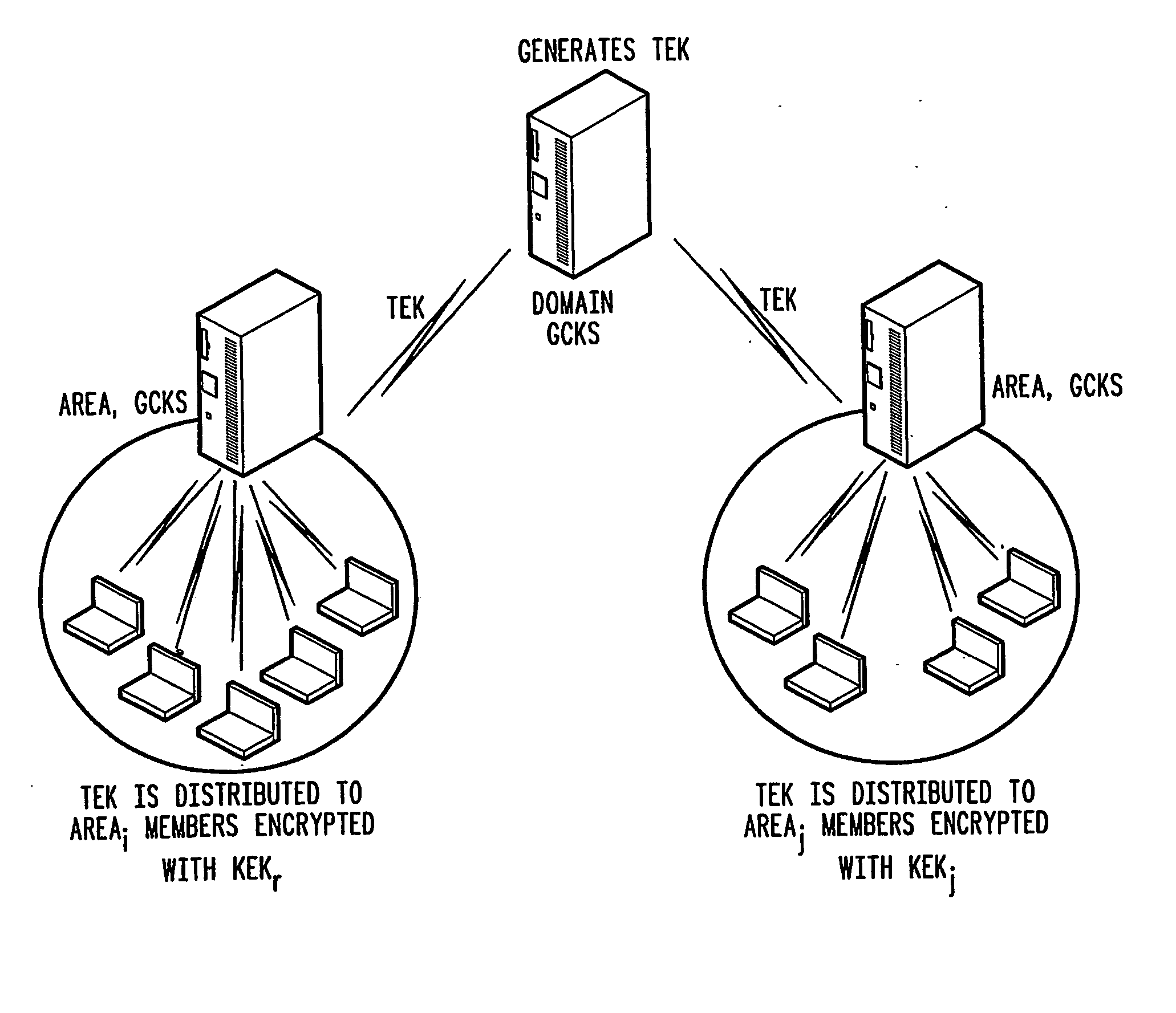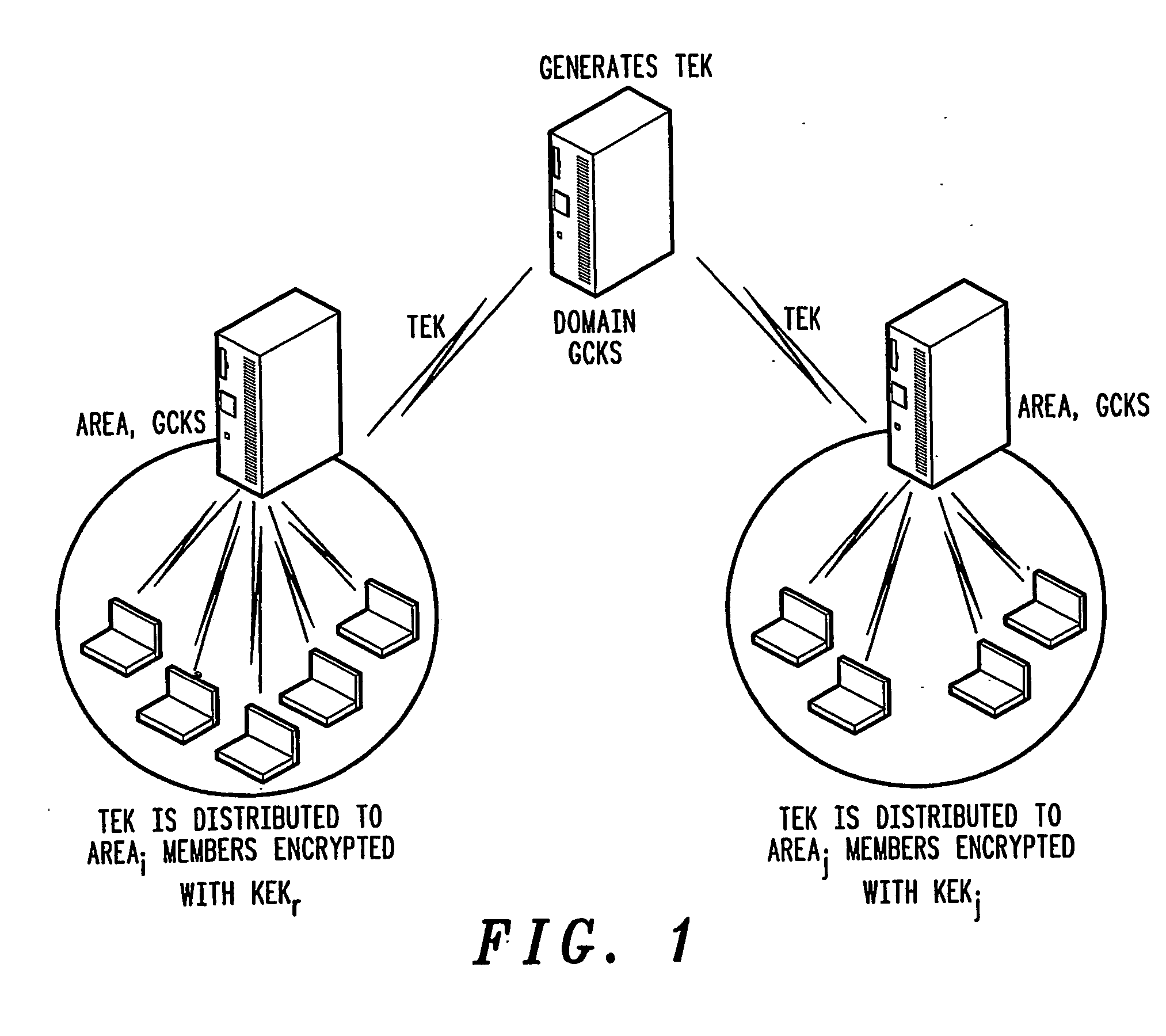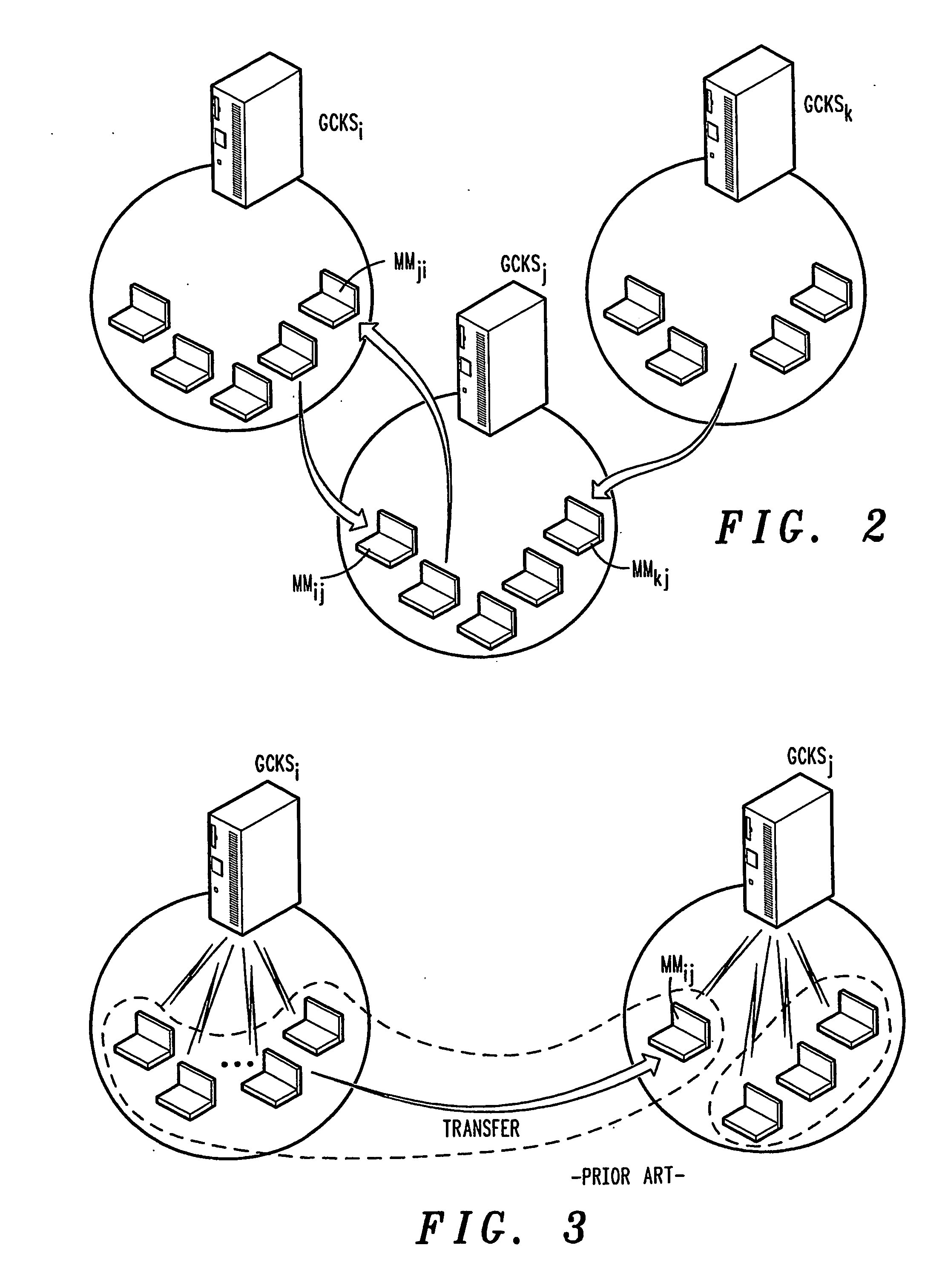Rekeying in secure mobile multicast communications
a mobile multicast and mobile multicast technology, applied in the field of rekeying in secure mobile multicast communications, can solve the problems of compromising data secrecy, affecting the security of ip multicast, and the mobility of users, so as to improve the inter-area rekeying significantly, reduce the impact of users' movement, and optimize the computation for mobile members.
- Summary
- Abstract
- Description
- Claims
- Application Information
AI Technical Summary
Benefits of technology
Problems solved by technology
Method used
Image
Examples
Embodiment Construction
[0038] Embodiments of the present invention shown in the drawings enable a reduction in the computational capabilities needed for both the key server and area members to support encryption / decryption operations due to membership dynamism (group join / leave) and member's frequent mobility, by separating member's mobility treatment from group membership dynamism, and by amortizing the movement impact over the TEK validity period. In addition embodiments of the present invention provide the following features. [0039] Reduced impact of members mobility on group rekeying: the key management system, by separating member's mobility treatment from group membership dynamism (group join / leave), facilitates movement of mobile members between administrative areas while remaining (from a group membership viewpoint) in the group. In addition, when the mobile member leaves the group, the rekeying process reacts with a limited additional impact on the remaining group members. This residual impact is...
PUM
 Login to View More
Login to View More Abstract
Description
Claims
Application Information
 Login to View More
Login to View More - R&D
- Intellectual Property
- Life Sciences
- Materials
- Tech Scout
- Unparalleled Data Quality
- Higher Quality Content
- 60% Fewer Hallucinations
Browse by: Latest US Patents, China's latest patents, Technical Efficacy Thesaurus, Application Domain, Technology Topic, Popular Technical Reports.
© 2025 PatSnap. All rights reserved.Legal|Privacy policy|Modern Slavery Act Transparency Statement|Sitemap|About US| Contact US: help@patsnap.com



